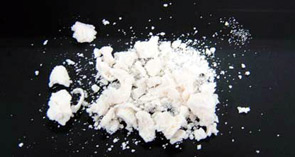| 2005 |

|
YEAR BOOK |
National University of Ireland, Galway
|
Green living polymers
|
The technological advancements of the second half of the twentieth century are inextricably tied with the emergence of new synthetic materials. These materials are usually polymers, which possess a macromolecular structure made of tens of thousands of monomer repeat units. Free radical chemistry accounts for the industrial preparation of more than 70% of all commercial polymers used in coatings, fibres, furniture, plastics, paints and textiles.
Despite the versatility of free radical polymerizations, the procedure could not produce materials with controlled molecular weights and complex architectures, because the life-time of reactive free radicals is less than 1 second before rapid termination occurs. In the 1990s, living free radical polymerizations were introduced, which have revolutionized material science. One such technique adds nitroxides, which are stable observable free radicals to the polymerizations. The nitroxide reversibly caps all growing polymer radicals to prevent terminations or dead polymer formation. The reactive radical is thus tamed and molecular control achieved. This is important since the properties and end-uses of the polymer are defined by its molecular structure and weight.
Since arriving in Galway in 2000, we have developed an active research group, which is publishing prolifically in high impact international research journals. Our work is in the synthesis and biological activity of novel anti-cancer agents operating via free radical mechanisms, as well as the described material science.
Recently, we have carried out the first nitroxide-mediated dispersion polymerizations in supercritical carbon dioxide (scCO 2 ). The work has been carried out by a talented IRCSET Embark postgraduate researcher, Julia Ryan in collaboration with Dr. Per Zetterlund and Professor Masayoshi Okubo from Kobe University, Japan. Dispersion polymerizations begin as a homogeneous mixture with the monomer, initiator and nitroxide soluble in the scCO 2 . When the polymer reaches a critical weight the chains become insoluble, and phase separation occurs. Coagulation of the polymer particles is prevented by carrying out the polymerization in the presence of a free radical initiator, which also acts as a stabilizer or inistab. Simple depressurisation eliminates CO 2 gas, and a dry polymer powder is obtained.

Contact: Dr. Fawaz Aldabbagh,
Department of Chemistry, National University of Ireland, Galway;
E-mail: [email protected] ;
Web: http://www.nuigalway.ie/chem/Fawaz/fawaz.htm